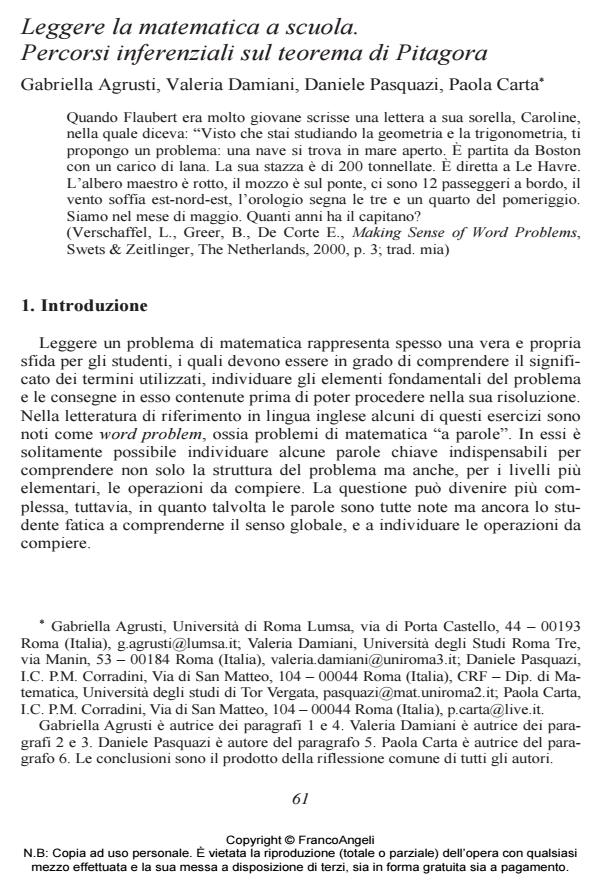Reading mathematics at school. Inferential reasoning on the Pythagorean Theorem
Journal title CADMO
Author/s Gabriella Agrusti, Valeria Damiani, Daniele Pasquazi
Publishing Year 2015 Issue 2015/1
Language Italian Pages 25 P. 61-85 File size 310 KB
DOI 10.3280/CAD2015-001007
DOI is like a bar code for intellectual property: to have more infomation
click here
Below, you can see the article first page
If you want to buy this article in PDF format, you can do it, following the instructions to buy download credits

FrancoAngeli is member of Publishers International Linking Association, Inc (PILA), a not-for-profit association which run the CrossRef service enabling links to and from online scholarly content.
Reading a mathematical problem can be often challenging for students. To be successful, they need to understand the words, transposing their meaning on an abstract level, to identify the relations stated in the problem and the task requested. Even if the meaning of the words is known, the case can be given that the student cannot grab the global meaning, nor inferring useful implications to solve the problem. This article offers an overview on reading comprehension issues linked to mathematical texts, and then proposes a set of common mistakes made by young readers, emerged in a first exploratory field experience carried out with grade 7 students. Given that learning activities were carried out on the Pythagorean Theorem, specific attention was devoted to the transposition of words into geometrical figures.
Keywords: Reading comprehension, mathematics, Pythagorean Theorem, inferences, lower secondary school.
- History and Epistemology in Mathematics Education Nicla Palladino, Daniele Pasquazi, pp.115 (ISBN:978-3-031-86869-6)
- Povertà educativa e sviluppo professionale degli insegnanti: un modello d'intervento Maurizio Gentile, Daniele Pasquazi, in CADMO 1/2025 pp.82
DOI: 10.3280/CAD2025-001006 - Pat-in-the-Loop: Declarative Knowledge for Controlling Neural Networks Dario Onorati, Pierfrancesco Tommasino, Leonardo Ranaldi, Francesca Fallucchi, Fabio Massimo Zanzotto, in Future Internet /2020 pp.218
DOI: 10.3390/fi12120218
Gabriella Agrusti, Valeria Damiani, Daniele Pasquazi, Leggere la matematica a scuola. Percorsi inferenziali sul teorema di Pitagora in "CADMO" 1/2015, pp 61-85, DOI: 10.3280/CAD2015-001007